One Investment to End Safety Risks: A Must-Read Mold Flipper Value Analysis for Bosses
As a business owner, you carry the weight of your entire operation on your shoulders. You manage strategy, you watch the numbers, and most importantly, you are responsible for the safety of your people. I know this because I've been there. In a steel mill, where massive equipment is the norm, the process of handling and turning heavy molds is a constant source of underlying risk. You have safety protocols, of course. But you know, as I do, that relying on cranes, chains, and human coordination for such a critical task leaves a small, but terrifying, window for catastrophic error. What if a chain slips? What if there's a moment of miscommunication? The consequences are something no CEO ever wants to face, impacting both your team and your bottom line.
A mold flipper is a specialized mechanical investment that fundamentally eliminates the most dangerous risks associated with manually turning heavy molds. Instead of using overhead cranes and rigging in a delicate balancing act, a mold flipper securely clamps the mold, rotates it smoothly in a controlled environment, and places it down safely. This single piece of equipment transforms a high-risk, multi-person job into a safe, efficient, one-person operation, directly preventing accidents that can lead to severe injury, production shutdowns, and extensive equipment damage.
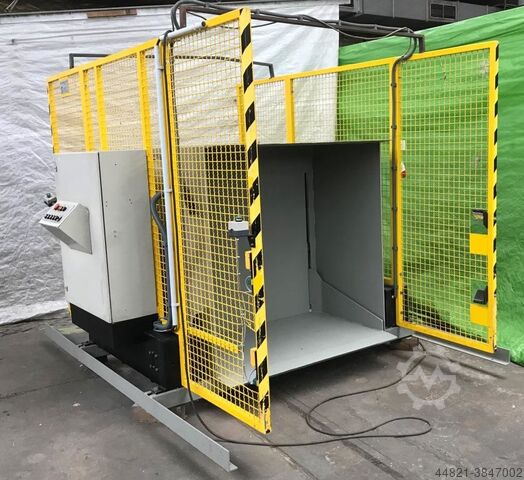
I understand the pressure you're under, Javier. Every investment must be justified with a strict analysis of its return. You're not just looking for a piece of equipment; you're looking for a strategic advantage. You need to know how a machine will help you tackle your real-world challenges, from aging equipment and energy costs to your ambitious goals for digitalization and efficiency. In this article, I want to walk you through that value analysis from my perspective—as an engineer and a factory owner. We will go beyond the obvious safety benefits and dive into the real, measurable impact a mold flipper can have on your productivity, your costs, and your long-term vision for the plant.
What Hidden Costs Are Lurking in Your Manual Mold Handling Process?
You are meticulous about tracking your big expenses, like energy and raw materials. But what about the costs that don't show up so clearly on a spreadsheet? Your current manual mold handling process, which seems like a standard operational procedure, is likely draining resources in ways you haven't calculated. Every time a mold is turned using a crane, small inefficiencies, minor delays, and unseen stresses on your equipment add up. These are the hidden costs that slowly erode your profit margin, creating a drag on the very efficiency you work so hard to improve.
Manual mold handling generates significant hidden costs through extended production downtime, incremental damage to expensive molds and cranes, higher labor allocation, and the unquantifiable but ever-present financial risk of a major safety incident. These factors combine to create a less efficient, more expensive, and higher-risk operation than what appears on the surface.
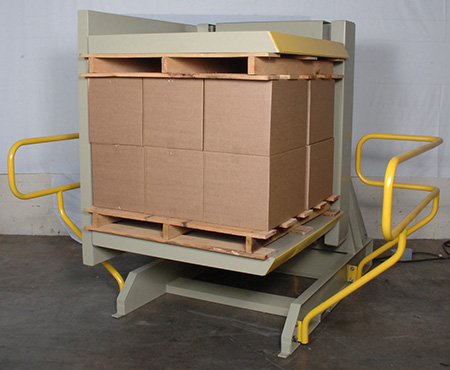
Dive Deeper: Exposing the True Financial Drain
Let's break down these costs with the critical eye of an engineer and a business owner. When we look past the obvious, the numbers start to paint a compelling picture. We can categorize these hidden costs into three main areas: Operational Costs, Asset Depreciation, and Human Factor Costs.
Operational Costs
The most immediate cost is time. A manual flip is a complex, multi-step process. You need a trained crane operator and at least one or two riggers on the floor. The area must be cleared. The mold has to be carefully rigged with chains or slings. The lift, turn, and placement are slow and deliberate. This entire process can take anywhere from 30 minutes to over an hour. This is not just labor time; it's production downtime. If that mold is for a critical production line, your entire line is waiting.
Let's put some numbers to it.
| Factor | Manual Mold Flip | With Mold Flipper |
|---|---|---|
| Personnel Required | 1 Crane Operator + 2 Riggers | 1 Operator (Forklift/Crane) |
| Average Time | 45 minutes | 10 minutes |
| Production Downtime | 45 minutes | 10 minutes |
With just two mold changes per day, you could be losing over an hour of production time. Over a year, that adds up to hundreds of hours of lost capacity. This directly fights against your goal of increasing capacity utilization to 95%.
Asset Depreciation Costs
Every time a mold is handled with chains, there is a risk of impact. A slight bump or an uneven landing can cause micro-fractures or warping in a mold that costs tens of thousands of dollars. These small damages accumulate, reducing the mold's lifespan and affecting the quality of your final product. Similarly, using your heavy-duty overhead cranes for these tricky, off-balance lifts puts undue stress on the crane's motors, cables, and structural components. This leads to more frequent maintenance, earlier component failure, and a shorter overall lifespan for one of your most critical pieces of plant infrastructure. This is a direct contributor to the "aging equipment" problem you're trying to solve. An investment here reduces the wear and tear on much larger, more expensive assets.
Human Factor Costs
This category is the hardest to quantify but has the biggest potential impact. The stress of performing a dangerous task weighs on your employees. It can lead to lower morale and higher employee turnover in skilled positions like crane operators and riggers. Then there's the constant, low-level risk of minor injuries—pinched fingers, strained backs—that lead to lost time and potential workers' compensation claims. And finally, there is the ultimate hidden cost: the liability of a catastrophic failure. A single accident can result in multi-million dollar liabilities, regulatory fines, and irreparable damage to your company's reputation. Eliminating that risk has a value that is almost impossible to overstate.
How Does a Mold Flipper Directly Translate to a Safer, More Productive Steel Mill?
You've invested in safety programs, training, and procedures. Yet, you know that the "human element" is always the most unpredictable variable, especially in a high-stakes task like turning a 10-ton mold. No matter how well-trained your crew is, the manual process using cranes and chains is inherently unstable. It relies on perfect judgment, perfect communication, and perfect equipment function every single time. This lingering risk creates a constant, low-level anxiety for any responsible manager and stands as a barrier to achieving a truly predictable and streamlined production environment.
A mold flipper directly enhances safety by replacing a variable, human-dependent process with a controlled, engineered, and repeatable mechanical action. It secures the mold before rotation, eliminating the risk of a dropped load. This mechanical certainty not only prevents accidents but also boosts productivity by transforming a slow, cautious procedure into a fast, confident, and predictable part of your workflow, directly contributing to higher equipment uptime and throughput.
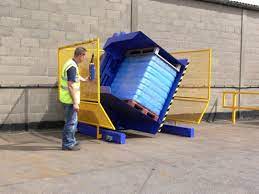
Dive Deeper: The Mechanics of Predictability and Performance
To truly appreciate the impact, let's compare the two processes side-by-side. As an engineer, I love looking at the mechanics of a problem. The difference here is fundamental: it’s the difference between balancing and securing.
The Safety Transformation: From Balancing to Securing
A manual flip is a balancing act. The center of gravity of the mold shifts constantly as it's being lifted and turned by chains. The entire stability of the multi-ton load depends on the skill of the crane operator and the integrity of the rigging.
- Manual Process Risks:
- Sling/Chain Failure: A worn chain link or damaged sling can snap.
- Load Shift: An improperly balanced load can shift unexpectedly.
- Human Error: A moment of distraction or misjudgment from the operator or rigger.
- Collision: Swinging the load in open space creates a risk of collision with other equipment or personnel.
A mold flipper eliminates these variables. The process is simple and secure:
- Load: The mold is placed on the flipper's platform with a forklift or crane (a simple, stable lift).
- Clamp: Hydraulic or mechanical clamps engage, holding the mold firmly in place against a solid steel structure.
- Rotate: A powerful, geared motor rotates the entire platform and mold by 90 or 180 degrees. The movement is smooth and controlled, contained entirely within the machine's footprint.
- Unclamp & Unload: The mold, now safely turned, is unclamped and removed.
The load is never unsecured while in motion. The risk of it falling is mechanically engineered out of the process. This single change moves mold handling from your list of "high-risk activities" to a standard, low-risk machine operation.
The Productivity Leap: From Minutes to Moments
With safety assured, speed and predictability follow. This directly addresses your goal of improving产能利用率 (capacity utilization). Let's quantify the impact on your schedule.
| Process Step | Manual Flip (Estimated Time) | Mold Flipper (Estimated Time) | Notes |
|---|---|---|---|
| Clear Work Area | 5 minutes | 2 minutes | Smaller operational footprint. |
| Rigging / Clamping | 15 minutes | 1 minute | Most significant time saving. |
| The Turn / Rotation | 10 minutes | 2 minutes | Slow and cautious vs. fast and confident. |
| De-rigging / Unclamping | 5 minutes | 1 minute | Simple and quick. |
| Total Time | 35 - 60 minutes | ~10 minutes | A 70-80% reduction in changeover time. |
This time saving is not just a one-off benefit. It makes your entire production scheduling more agile and reliable. When a mold change takes a predictable 10 minutes, your smart scheduling platform can plan more accurately. It reduces the buffer time needed between production runs, allowing you to squeeze more productive minutes out of every shift and pushing you closer to that 95% effective runtime goal.
Beyond Safety: What's the Real ROI of a Mold Flipper for a Forward-Thinking CEO?
As a CEO like you, Javier, I know that every investment is scrutinized. It's easy to look at a piece of safety equipment and categorize it as a "cost center"—a necessary expense to mitigate risk, but not something that actively generates profit. This is a common, but limited, perspective. If you only view the mold flipper through the lens of accident prevention, you are missing the most powerful part of its value proposition. You are missing how it acts as a catalyst for achieving your most important strategic goals.
The true ROI of a mold flipper for a forward-thinking CEO is realized through a combination of direct cost savings, productivity gains, and strategic enablers. It directly lowers operational costs in labor and maintenance, increases revenue potential through higher plant utilization, and serves as a foundational tool for achieving broader goals like digitalization and improved employee retention.
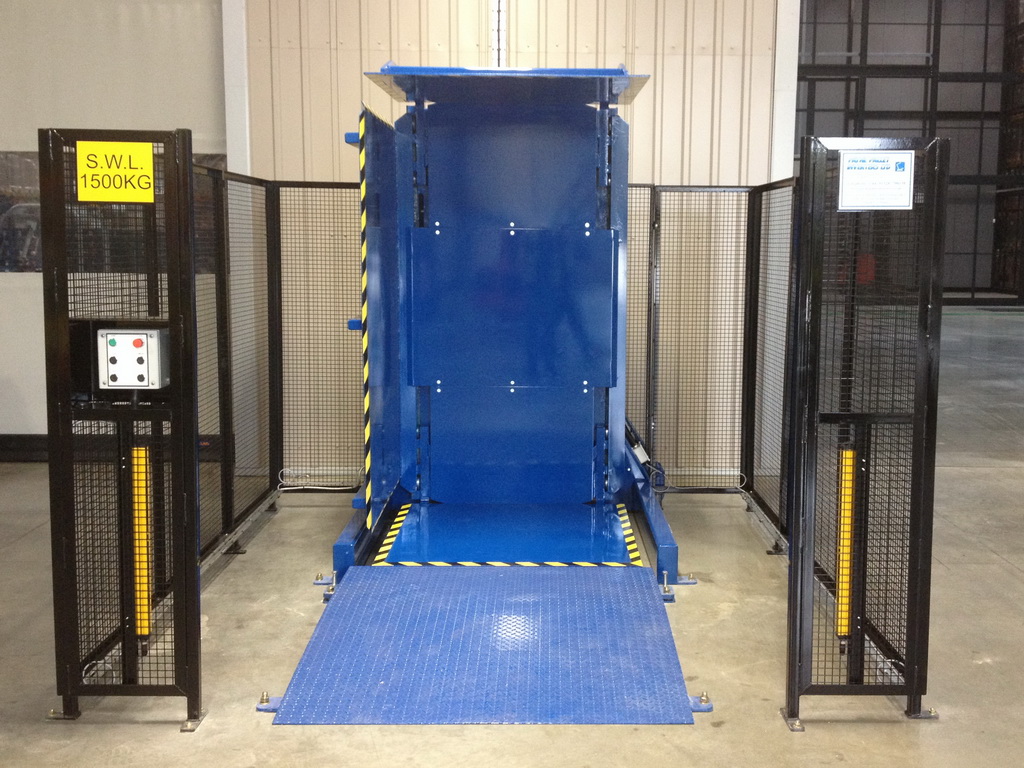
Dive Deeper: A Holistic View of Return on Investment
A strategic investment pays dividends across the entire business. A mold flipper is a perfect example. Let's build a business case that reflects the way you think about your steel mill, connecting the equipment directly to your goals of cost reduction, digital transformation, and increased profitability.
Quantifiable Financial Returns
This is the hard data that justifies the capital outlay. We're moving beyond hidden costs to calculate tangible savings that will appear on your financial statements.
| ROI Category | Annual Cost (Manual Process) | Annual Cost (With Mold Flipper) | Annual Savings |
|---|---|---|---|
| Labor Costs | 2 riggers x 1.5 hrs/day x 300 days x $25/hr = $22,500 | $0 (task absorbed by operator) | $22,500 |
| Production Uptime | 1.5 hrs/day downtime x 300 days x $1,000/hr value = $450,000 | 0.3 hrs/day downtime x 300 days x $1,000/hr value = $90,000 | $360,000 |
| Mold Maintenance | Estimated 5% higher repair/replacement cost | Baseline cost | $5,000 - $15,000 |
| Crane Maintenance | Accelerated wear and tear | Reduced stress, normal maintenance | $2,000 - $8,000 |
| Total Estimated Annual Savings | ~$390,000+ |
Note: Values are illustrative. You can substitute your plant's actual labor rates and downtime cost for a precise calculation.
This calculation alone often shows a payback period of less than a year. It directly addresses your goal to lower overall operating costs by 8% or more; this one machine could contribute a significant portion of that target.
Strategic Enabler Returns
This is where the investment transcends a simple machine and becomes part of your long-term strategy.
-
Accelerating Digital Transformation: You plan to deploy MES, IoT sensors, and data analytics. A modern mold flipper is built for this. It can be equipped with sensors to track cycle counts, operating hours, and motor current. This data feeds directly into your MES and predictive maintenance platforms. It becomes a smart, connected asset. Instead of waiting for a breakdown, your system can flag an alert: "Motor current on mold flipper has increased 8% over the last 50 cycles. Schedule inspection." This is the predictive maintenance that helps you achieve 95% utilization.
-
Improving Employee Morale & Retention: In a competitive labor market, you need to be an employer of choice. Investing in a mold flipper sends a powerful message to your workforce: "Your safety is our priority." It removes one of the most stressful and dangerous jobs in the plant. This improves morale, reduces employee turnover, and makes it easier to attract and retain top talent. A happy, stable workforce is a productive workforce.
-
Enhancing Brand and Reputation: Your customers, especially in the automotive and construction sectors, are increasingly concerned with their supply chain's ESG (Environmental, Social, and Governance) performance. Having a demonstrably safe, modern, and efficient plant is a competitive advantage. It can be the deciding factor in winning large contracts.
How Can a Mold Flipper Partner Help Tackle Your Biggest Operational Challenges?
Javier, you know that buying a machine is not the solution. The solution is integrating that machine effectively to solve your specific, high-level problems. Your challenges are significant: managing volatile energy costs, dealing with aging infrastructure, facing environmental pressures, and navigating market fluctuations. A simple equipment salesperson who just wants to sell you a standard model from a catalog cannot help you with this. They don't understand the complexities of running a 2-million-ton steel mill. You need a partner who sees the machine not as the end product, but as a tool to help you execute your grander vision.
A true mold flipper partner helps you tackle your core operational challenges by providing a total solution, not just a product. This involves custom-engineering the equipment to fit your existing plant layout, integrating it with your digital transformation roadmap, and demonstrating how the efficiency gains from the investment can help you fund other strategic initiatives, like environmental upgrades.
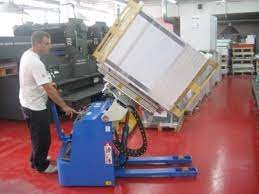
Dive Deeper: The Partner vs. Supplier Mentality
The difference between a supplier and a partner lies in their approach to your problems. A supplier sells you what they have. A partner helps you get what you need. As someone who has built a factory from the ground up, this distinction is everything to me. Here is how a partnership approach directly addresses your key challenges.
Challenge: Aging Equipment and Plant Layout
Your plant has been running for over 15 years. Your layout is established, and space can be tight. You can't just clear a huge area for a standard, off-the-shelf machine.
- A Supplier's Approach: "Here is our standard model. Here are the dimensions. Tell us where you want it."
- A Partner's Approach: "Let's start with your CAD drawings and a site visit. We see you have a support column here and limited overhead clearance. We will design a custom low-profile mold flipper, perhaps with a pit-mounted design or an L-shaped configuration, that fits perfectly into your existing workflow. We will ensure the loading and unloading points match your current crane and forklift paths to minimize disruption."
This tailored approach means the solution adapts to your reality, not the other way around. It protects your existing infrastructure while upgrading your capability.
Challenge: Driving Digital Transformation
Your goal is a fully visualized, data-driven operation with MES and IoT. A standalone machine that doesn't communicate is a step backward, not forward.
- A Supplier's Approach: "It has a start and stop button."
- A Partner's Approach: "We see you are implementing a new MES. We will work with your integration team to ensure our control panel speaks the same language. We can outfit the flipper with the IoT sensors you require—vibration, temperature, cycle counters—and provide the data output in a format that your analytics platform can easily digest. The machine will arrive ready to be a smart node in your digital ecosystem."
This turns the investment into an active contributor to your digitalization goals, providing valuable data for your predictive maintenance and smart scheduling platforms.
Challenge: Balancing Costs and Strategic Investments
You face immense pressure to invest in environmental upgrades while also lowering overall operating costs. Every dollar must work twice as hard.
- A Supplier's Approach: "The price of the machine is $X."
- A Partner's Approach: "Let's re-examine the ROI calculation. The $390,000 in annual savings from improved efficiency and reduced labor is now free cash flow. This financial gain can be directly re-allocated to help fund the capital investment for the new high-furnace gas recovery system you need to meet new emission standards. By making your operation more efficient, we are helping you afford to be more environmentally compliant."
This strategic financial thinking shows an understanding of your biggest challenge: capital allocation. It frames the mold flipper not as a cost, but as an enabler for other critical projects.
My Insight
Javier, when I started my own factory, I faced many of the same pressures you do. I began as an engineer on the floor, so I knew the equipment inside and out. But when I became the owner, I had to learn to think differently. Every investment was a risk. I remember agonizing over the cost of a new wrapping machine, trying to justify the expense when our old one was "good enough."
Then, we had a near-miss. A heavy coil shifted during wrapping. Nobody was hurt, but it was a wake-up call. The cost of that potential accident—in downtime, in damaged product, and most importantly, in the potential harm to my team—would have been ten times the cost of the new machine.
That day, my perspective changed. I realized the smartest investments were not just about speed or capacity, but about creating a process that was stable, predictable, and safe. Reliability is the true foundation of profitability. All your ambitious goals—95% utilization, digital transformation, lower energy use—they all depend on having a stable, predictable operational base. You cannot build a modern, data-driven factory on a foundation of risky, manual processes.
I see in your profile a fellow engineer who became an entrepreneur. You appreciate innovation, and you have the vision to see the big picture. You've already made smart moves with waste heat recovery and intelligent scheduling. A mold flipper is the next logical step. It's not just a piece of hardware. It's a foundational investment that removes risk, streamlines a critical process, and unlocks the efficiency you need to achieve your strategic goals. It's the kind of decision a forward-thinking leader makes to build a stronger, safer, and more profitable company for the next 25 years.
Conclusion
Investing in a mold flipper is not an operational expense. It is a strategic decision that delivers a safer workplace, enhanced productivity, and a clear, measurable return on your investment.


